 |
 |
 |
| |
Insufficient Virus Suppression during HAART Is a Strong Predictor for the Development of AIDS-related Lymphoma: German CLINSURV Cohort
|
| |
| |
Reported by Jules Levin
15th CROI, Feb 3-6, 2008, Boston
Alexander Zoufaly*1, H J Stellbrink2, M an der Heiden3, C Kollan3, J van Lunzen1, O Hamouda3, and CLINSURV Study group
1Univ Med Ctr Hamburg-Eppendorf, Germany; 2IPM Study Ctr, Hamburg, Germany; and 3Robert Koch Inst, Berlin, Germany
from Jules Levin: Age (per every 10 yrs), cumulative viremia, and the latest CD4 count "are strong risk factors for the development of lymphoma". CD4 count <200 posed a greater risk than CD4 201-350, but both CD4 categories increased risk. More details in the tables/graphs below, as risk for each of several different lymphomas varied regarding whether viral load or CD4 was a risk for the particular type of lymphoma.
In preliminary model MSM were at increased risk but in final model MSM were not at increased risk, that dropped out as a significant risk.
ABSTRACT
Background: The incidence of opportunistic infections has decreased significantly with HAART. The occurrence of AIDS-related lymphoma, however, has not been reduced to the same extent. This analysis aimed at determining risk factors for the development of AIDS-related lymphoma during HAART.
Methods: Data of 6458 patients on HAART (minimum 3 drugs) from the German CLINSURV cohort were analyzed. Since 1999, this cohort has collected retrospective and prospective data on >17,000 HIV+ patients. Patients were included from the initiation of HAART until the development of lymphoma or until censoring at last observation without lymphoma, or December 31, 2006. We found that 94 subjects had incident non-Hodgkin's lymphoma (newly diagnosed ≥30 days after inclusion). Cases of lymphoma diagnosed within 30 days on HAART were excluded as "prevalent." A Cox proportional hazards model was applied to identify risk factors and a parametric model was used to verify the results.
Results: We identified 94 lymphomas (78 AIDS-related non-Hodgkin's lymphomas, and 16 primary central nervous system [CNS] lymphomas). A total of 28,125 person-years of follow-up was available with an incidence rate during HAART of 3.3 lymphomas per 1000 person-years.
Multivariate Cox regression identified the following risk factors: men who have sex with men (MSM) risk (HR 1.86, 95%CI 1.19 to 2.90, p <0.008), age/10 years (HR 1.40,CI 1.17 to 1.68), actual CD4 count <200 (HR3.64, CI 2.08 to 6.40) or 200 to 350 (HR 3.08, CI 1.74 to 5.43), at least 75% of viral load measurements >500 copies/mL (HR3.41, CI 2.17 to 5.35), and CDC C diagnosis before HAART (HR 5.29, CI 3.48 to 8.06) (all p <0.001). In addition, a prospective online model confirmed cumulative log viral load to be a strong risk factor. A repeat analysis excluding strictly defined primary CNS lymphoma yielded very similar results. When primary CNS lymphoma (n = 16) was analyzed separately, a stronger effect of actual CD4 count <200 (HR5.60, CI 1.34 to 23.41, p <0.019) was observed, and the influence of >75% of viremia measurements >500 copies/mL was decreased (HR1.81, CI 0.54 to 6.05, p >0.33).
Conclusions: In addition to known risk factors, MSM status and incomplete viral suppression during HAART were strong predictors for the development of AIDS-related lymphoma in this analysis. As viremia represents the only potentially modifiable risk factor identified, a clinical strategy to optimize HAART at any time-point with respect to viral suppression could help to minimize the incidence of AIDS-related lymphoma.
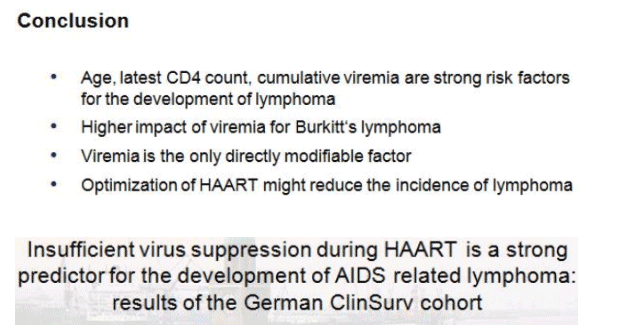

previous studies show prolonged immunodeficiency associated with increased risk; latest viral load associated with increased risk. Viral load<500 was protective but this was not shown in the multivariate analysis. And the speaker said there has been seen a higher risk with higher viral load.
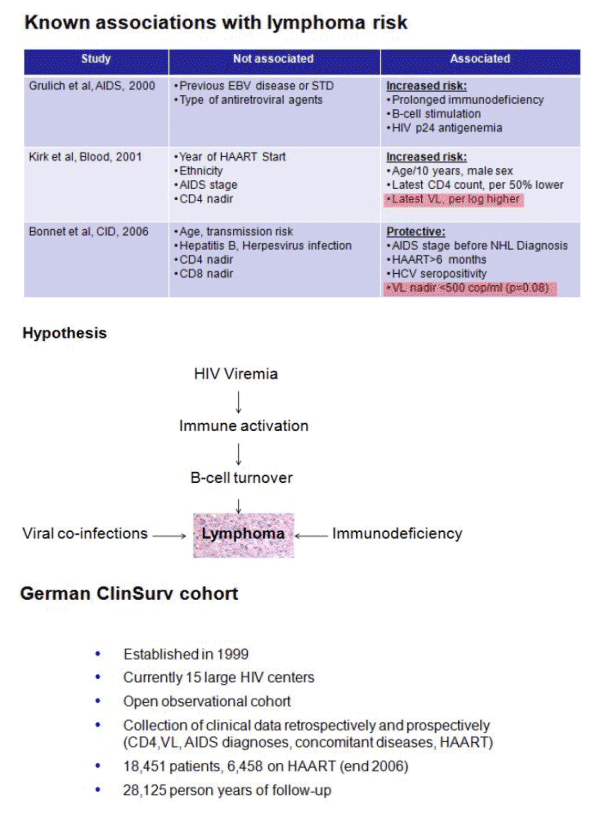
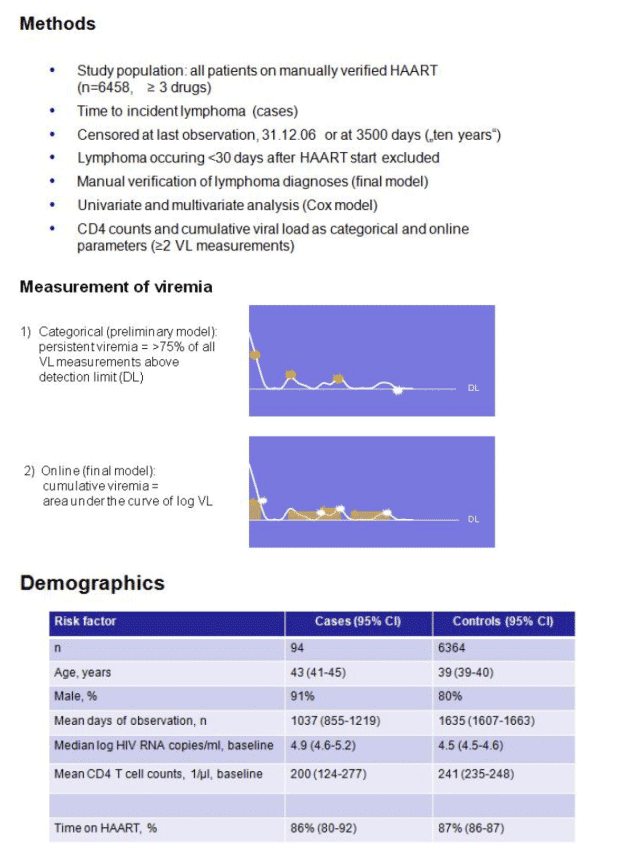
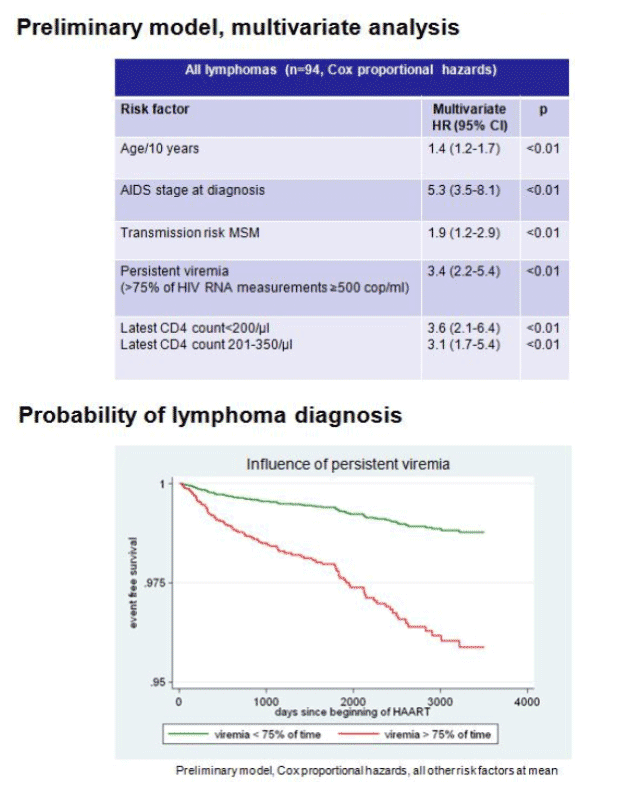
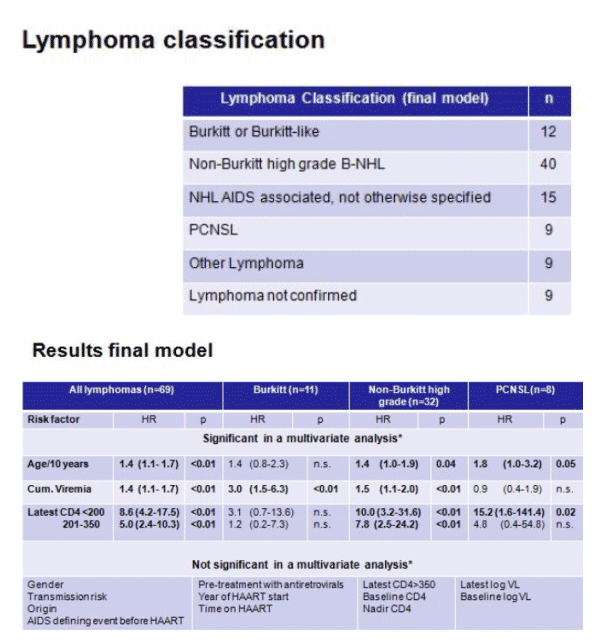
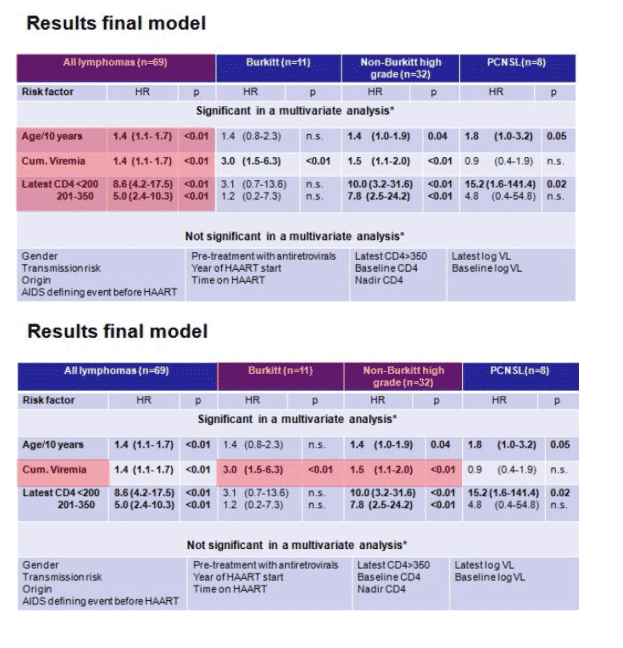
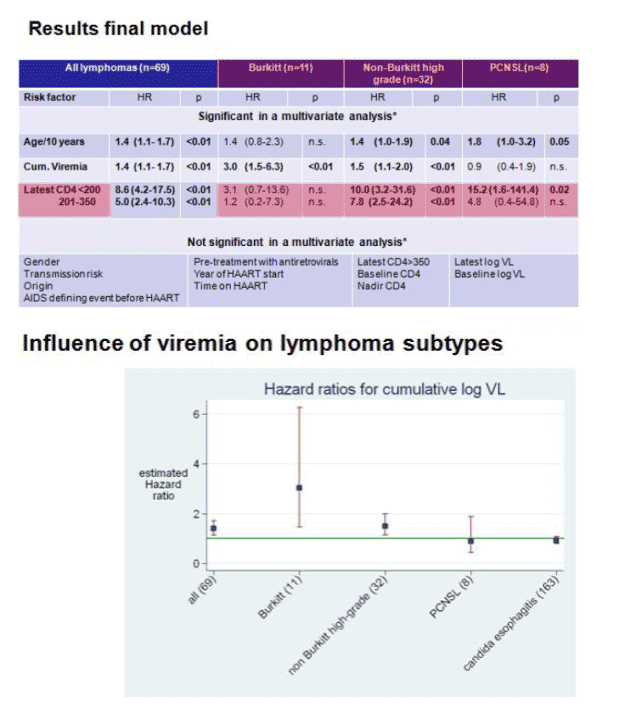
|
| |
|
 |
 |
|
|